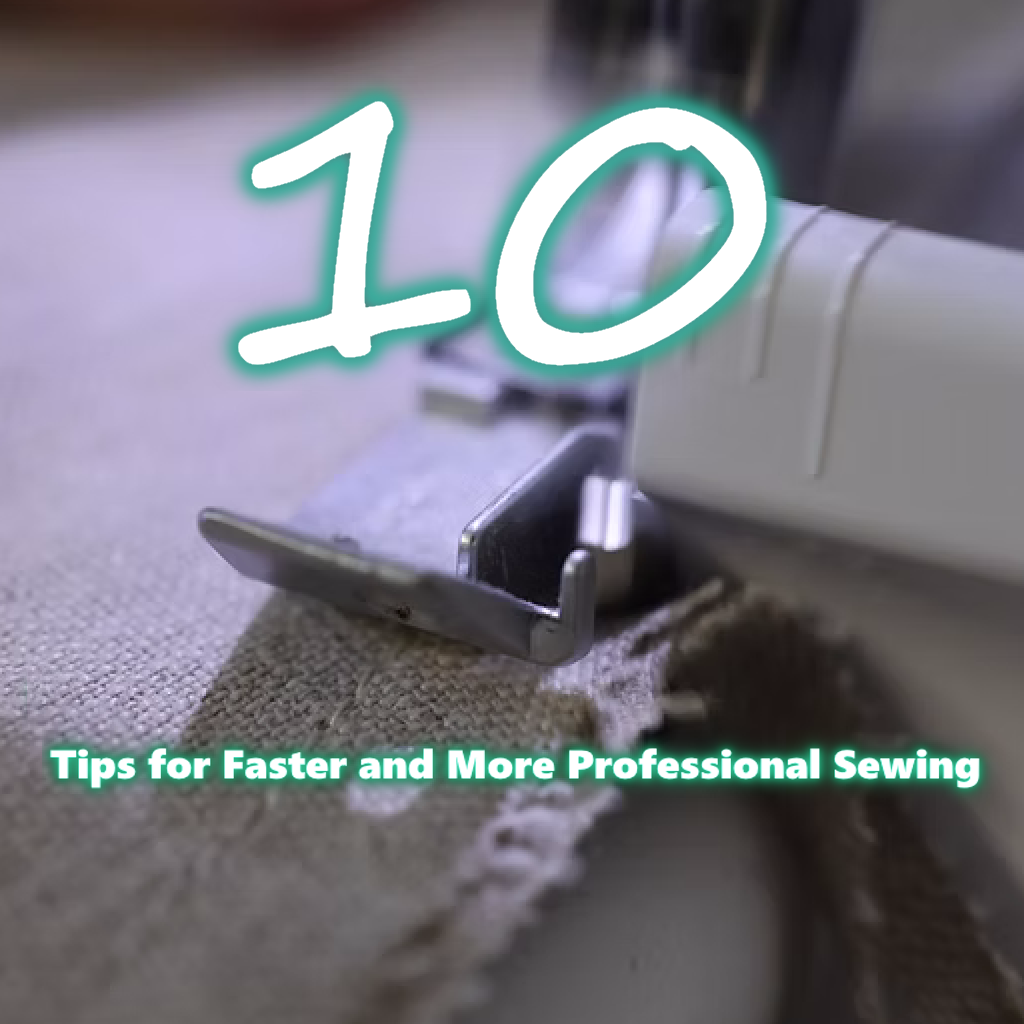
Sewing is a skill that improves with practice, but learning a few key techniques can help you work faster while achieving a professional finish. Whether you’re a beginner or an experienced sewist looking to refine your skills, these 10 tips will help you streamline your sewing process and enhance the quality of your projects.
1. Keep Your Sewing Tools Organized
Efficiency starts with organization. Keep essential tools like scissors, measuring tape, pins, and seam rippers within easy reach. Consider using:
- A pegboard for hanging tools
- Small containers or magnetic pin holders
- A dedicated sewing station to avoid searching for supplies
2. Use Quality Sewing Equipment
Investing in a reliable sewing machine and high-quality needles, threads, and scissors can make a huge difference. Cheap or dull tools slow you down and can cause mistakes. Make sure to:
- Regularly clean and oil your sewing machine
- Replace dull needles frequently
- Use sharp fabric scissors or a rotary cutter for precise cuts
3. Pre-Wash and Press Your Fabric
Always wash and iron fabric before cutting. This prevents shrinkage after sewing and ensures accurate measurements. A well-pressed fabric also makes cutting and stitching easier.
4. Use the Right Needle and Thread
Choosing the correct needle and thread for your fabric prevents skipped stitches and uneven seams. Some general guidelines:
- Use a universal needle for cotton fabrics
- A ballpoint needle for knits
- A heavy-duty needle for denim or canvas
Matching your thread type to your fabric also improves durability and aesthetics.
5. Cut Accurately and Use Fabric Weights
Cutting fabric correctly saves time during sewing. Instead of using pins, try fabric weights and a rotary cutter for smooth and precise cuts. When using scissors, make long, clean cuts rather than small snips to prevent jagged edges.
6. Master the Art of Pinning and Clipping
Proper pinning or clipping helps keep your fabric in place and prevents shifting. Instead of pinning every inch, space pins evenly and use fabric clips for thicker fabrics to avoid puckering.
7. Use Chain Stitching to Save Time
When sewing multiple pieces, instead of stopping and cutting thread after each piece, use a chain stitching technique:
- Sew one piece, leave a small gap, then feed the next piece in without cutting the thread.
- This technique is common in quilting and speeds up production significantly.
8. Press As You Sew
Pressing seams at each step of the sewing process helps create a professional finish. Use:
- A steam iron to flatten seams
- A tailor’s ham for shaping curved seams
- A pressing cloth to protect delicate fabrics
9. Use Virtual Try-On for Pattern Adjustments
Before cutting fabric, ensure your pattern fits well by using virtual try-on tools. Apps like Sew It Yourself allow you to visualize the final look and make necessary adjustments beforehand, reducing trial and error.
10. Learn Basic Time-Saving Techniques
Speed up your sewing projects by adopting these simple techniques:
- Use a serger: A serger trims and finishes edges in one step, reducing the need for separate hemming.
- Batch similar tasks: Sew all straight seams first, then move on to zippers or buttons.
- Mark notches and guides with chalk or tape: This eliminates the need for constant measuring and adjustments.
Final Thoughts
By incorporating these tips into your sewing routine, you’ll not only work faster but also achieve cleaner, more professional results. Whether you’re making garments, home decor, or accessories, efficiency and precision go hand in hand.
Looking for more ways to improve your sewing? Check out Sew It Yourself for free patterns and virtual try-on features to help perfect your designs before sewing!
Happy sewing! ✨🧵

Leave A Comment